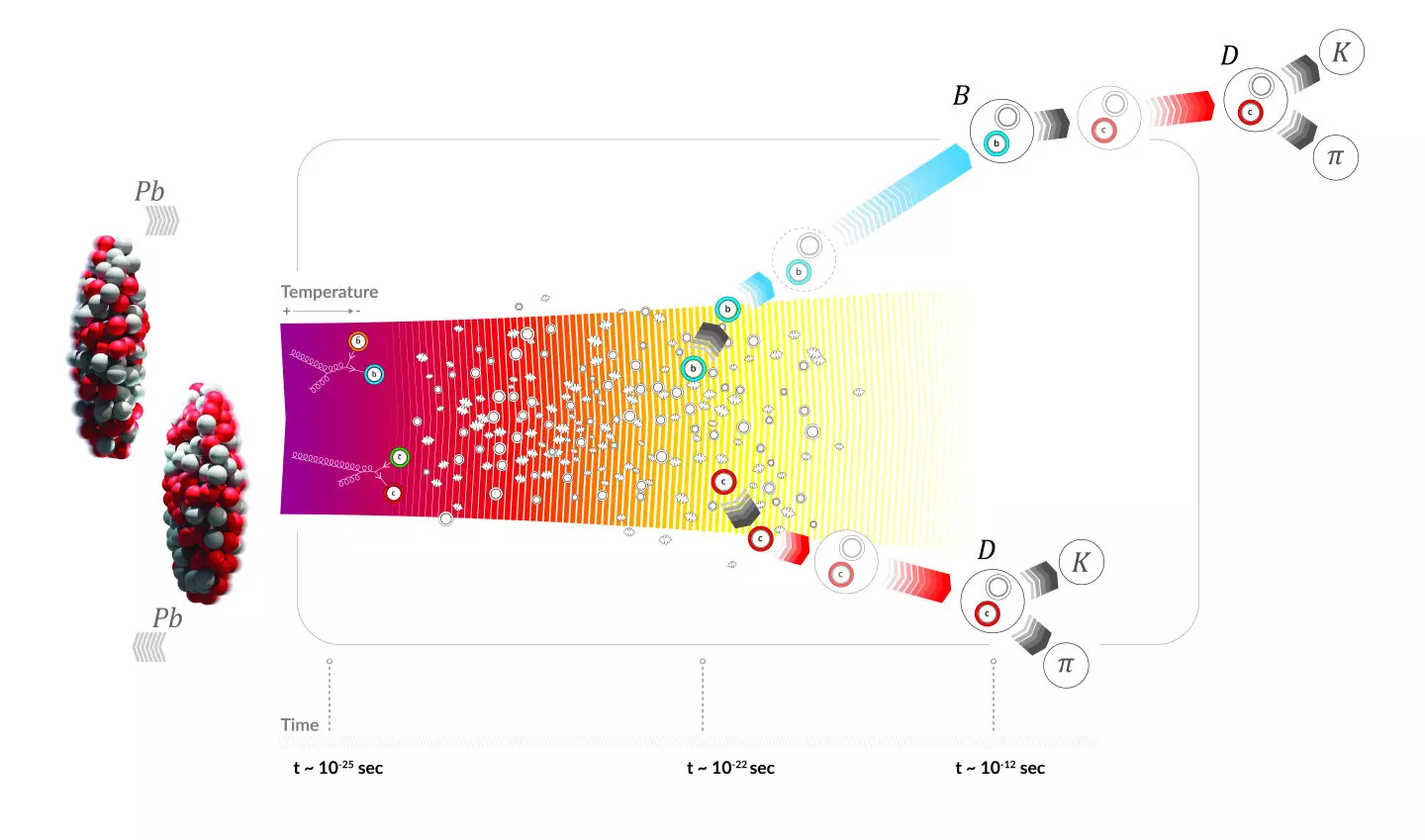When the Large Hadron Collider (LHC) smashes together two lead ions, it creates a unique state of matter known as quark-gluon plasma (QGP). This QGP, which is believed to have existed in the early universe moments after the Big Bang, provides valuable insights into the fundamental properties of matter. In a recent study, the ALICE collaboration at CERN’s LHC reported a new measurement of the elliptic flow of hadrons containing heavy quarks, offering exciting new perspectives on the thermalization and dynamics of these particles within the QGP.
The collision of lead ions at the LHC produces a fireball of particles known as quark-gluon plasma. This state of matter is characterized by the absence of confinement, allowing quarks and gluons to exist freely rather than being confined within composite particles called hadrons. The fireball rapidly expands and cools down, causing the quarks and gluons to transform back into hadrons. By studying the flow of these hadrons, particularly in the elliptic shape resulting from non-head-on collisions, researchers gain valuable insights into the properties of the QGP.
Unlike the majority of quarks and gluons in the QGP, heavy charm and beauty quarks are produced in the initial stages of lead-ion collisions, before the plasma is formed. This unique property allows them to interact with the QGP throughout its entire evolution. Heavy quarks interact with the plasma’s constituents and gradually reach thermal equilibrium, a process that occurs faster for charm quarks than for beauty quarks due to their difference in mass. Once in thermal equilibrium, charm quarks form D mesons, while beauty quarks form B mesons by combining with the plasma’s light quarks.
The ALICE collaboration conducted a new measurement of the elliptic flow of hadrons containing heavy quarks by analyzing non-head-on lead-lead collisions during Run 2 of the LHC. To achieve this, they employed a machine-learning technique to distinguish between the products of prompt and non-prompt D mesons, as well as to suppress background particle processes that mimic D meson production. The results confirmed the expectation that the elliptic flow of non-prompt D mesons is weaker than that of their prompt counterparts, indicating the longer thermalization time for beauty quarks compared to charm quarks.
The measurement of the elliptic flow of heavy quarks sheds new light on the thermalization process of beauty quarks within the quark-gluon plasma. This discovery opens up new avenues for further ALICE measurements during Run 3 of the LHC. With a significantly larger sample of lead-lead collisions, these future measurements will offer a more detailed understanding of the dynamics and behavior of charm and beauty particles within the QGP.
As the LHC continues to push the boundaries of particle physics, experiments such as ALICE play a critical role in unraveling the mysteries of the early universe. The study of heavy quarks and their elliptic flow provides crucial insights into the behavior of matter under extreme conditions. With ongoing advancements in technology and a wealth of upcoming data from Run 3, scientists are poised to unlock even deeper understandings of the quark-gluon plasma and its fundamental properties.
The recent measurement of the elliptic flow of heavy quarks in the quark-gluon plasma by the ALICE collaboration represents a significant milestone in our quest to understand the early universe. By studying the properties and dynamics of heavy quarks, researchers gain valuable insights into the complex behavior of matter under extreme conditions. The measurement confirms previous expectations regarding the thermalization of beauty quarks and paves the way for future advancements in our understanding of the quark-gluon plasma. With each new discovery, we move closer to unraveling the mysteries of the universe’s origins, one collision at a time.


Leave a Reply